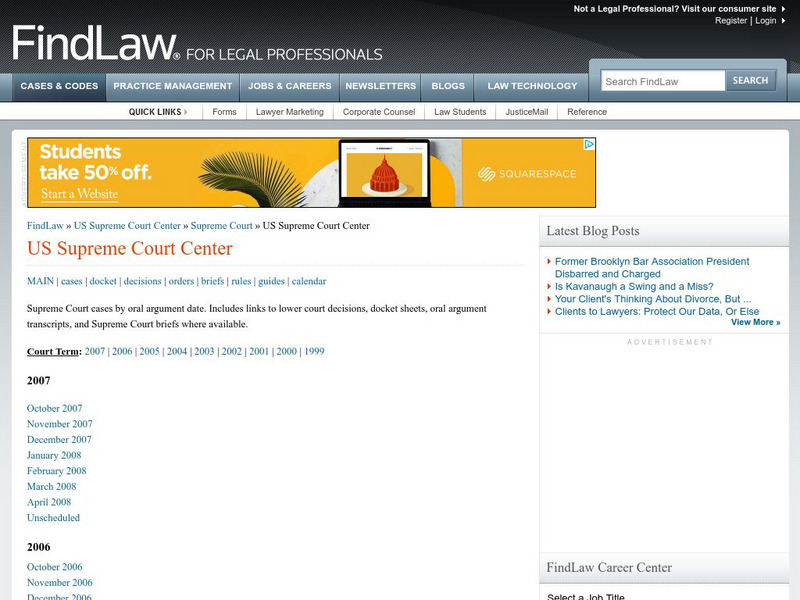Other
World Justice Project: What Is the Rule of Law?
Derived from internationally accepted standards, the World Justice Project's definition of the rule of law is a system in which the following four universal principles are upheld by four universal principles. These four universal...
Utah Education Network
Uen: Lesson Plan: Why Do We Need Rules?
Lesson that helps students understand why rules are needed. Students discuss the story Know and Follow Rules by Cheri J. Meiners, compare the rules in the book to rules at home and at school, and develop a list of rules for the classroom.
C3 Teachers
C3 Teachers: Inquiries: Civic Ideals and Practices
A learning module on why we have rules. It includes several supporting questions accompanied by formative tasks and source materials, followed by a summative performance task. Students will examine their values and how they express them,...
Thomson Reuters
Find Law: Supreme Court Center
FindLaw provides the following information on the Supreme Court: The docket, cases, decisions since 1893, orders, briefs, court rules, court filing guides, and calendar.
Department of Defense
Do Dea: Rules of Weight Lifting
One of the best reasons to lift weights is to reduce your risk of injury in daily life by strengthening your muscles and bones. Follow these safety tips to learn the proper way to lift weights to avoid injury. Lessons, information,...
Other
Law School help.com: Torts: Duty
Here is a definition of "duty" followed by a reference to and description of the case Palsgraf v. Long Island Railroad Co. Learn about the "duty of one in imminent peril" as well as the "responsibility of one causing the perilous...
Cold Spring Harbor Laboratory
Dna From the Beginning: Genetic Inheritance Follows Certain Rules
Find out what happened when Mendel crossed two hybrid pea plants. The animations do a good job explaining why these crosses produce a 3:1 ratio of traits.
Travel Document Systems
Tds: Guinea Bissau: History
Read about the history of Guinea-Bissau as part of the Portuguese colonial empire. Follow its fits and starts in developing a democratic government after is independence. Information is from the U.S. State Dept. Background Notes.
Texas Education Agency
Texas Gateway: Chapter 6: The Relatively Recent Arrival of Economic Growth
By the end of this section, you will be able to do the following: Explain the conditions that have allowed for modern economic growth in the last two centuries and analyze the influence of public policies in the long-run economic growth...
Math Is Fun
Math Is Fun: Triangle Identities
View examples of triangle identities, equations that are true for all triangles: Law of Sines, Law of Cosines, and Law of Tangents. Follow links to learn more about the purpose and examples of each identity.
Oswego City School District
Regents Exam Prep Center: Power to a Power
Use these examples to learn the power to a power exponent rule. The steps are easy to follow and will help students remember the laws of exponents.
Texas State Library and Archives Commission
Texas State Library and Archives Commission: Texas Joins the Battle: African American Women, 1890s
See photos that are representative of the lives of African-American women at the turn of the century and read about the discrimination black women and men faced: Jim Crow laws, poll taxes, and the "white primary" rule. A brief...
Other
What Students Need to Know: Freedom of Information and Protection of Privacy
This lesson unit published by the Information and Privacy Commissioner of Ontario has four activities that explore the concept of privacy and prompt the discussion of privacy issues in young scholars' own lives. The lessons refer to...












